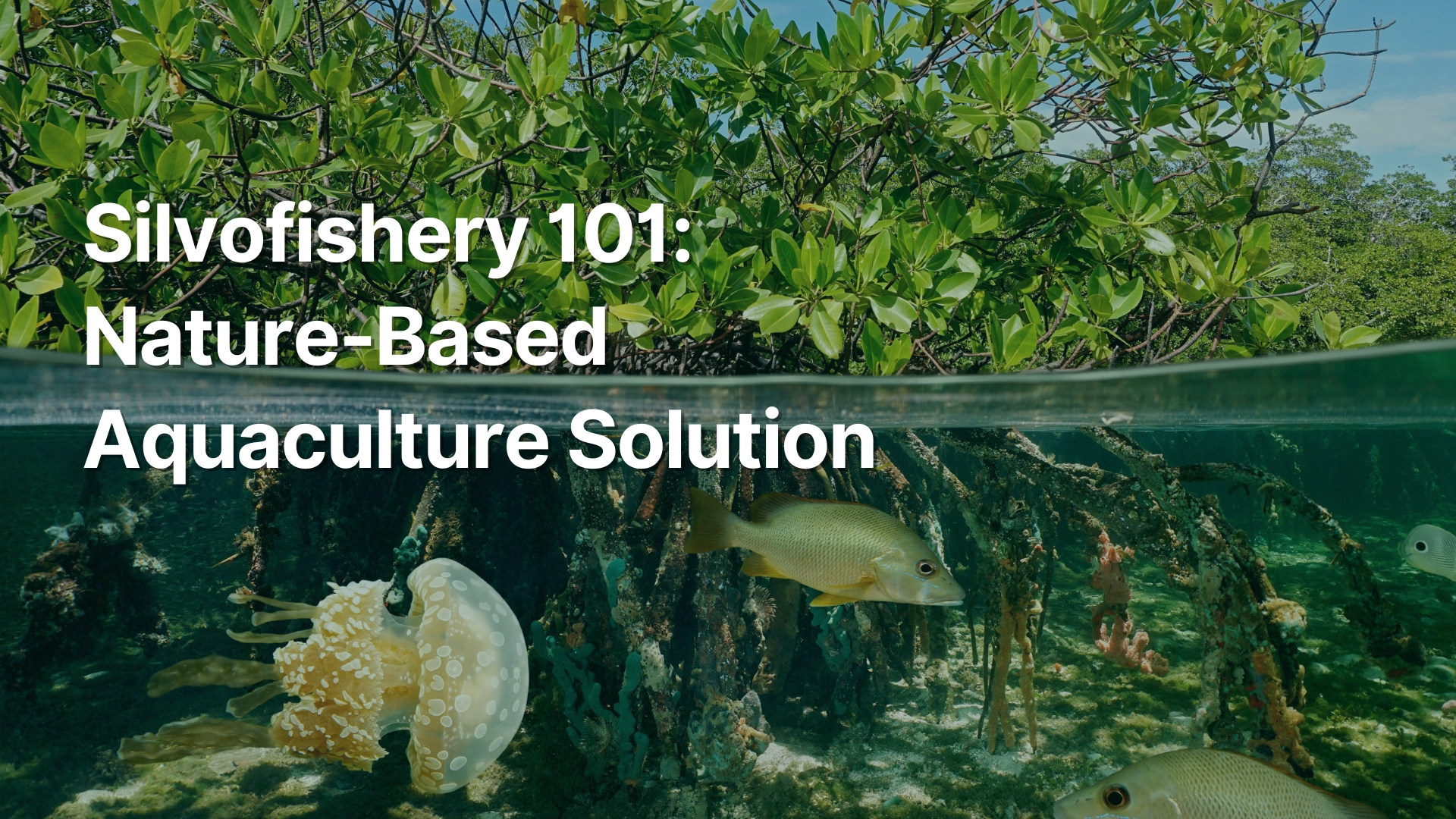Get to Know: Silvofishery - A Nature-Based Solution for Sustainable Aquaculture and Mangrove Restoration
Others

Indonesia holds the largest area of mangrove forests in the world—over 3.3 million hectares, contributing nearly 23% of the global mangrove ecosystem. However, unsustainable aquaculture practices, especially shrimp and fish pond conversions, have significantly degraded these coastal forests.
Despite the government’s ambitious 600,000-hectare mangrove restoration target by 2024, only 25% of this has been achieved. The degradation of mangroves negatively impacts aquaculture. Without natural barriers, aquaculture ponds are increasingly vulnerable to tidal surges, leading to fish and shrimp loss.
What is Silvofishery?
Silvofishery is a sustainable aquaculture system that integrates mangrove cultivation with fish, shrimp, or clam farming—without clearing existing forests. This nature-based solution preserves ecological balance, supports coastal biodiversity, and improves pond productivity.
There are two primary models of silvofishery ponds:
-
Pond Trenches (Empang Parit):
Fish are raised in the central pond, surrounded by mangroves on the outer perimeter. Water channels connect the two for nutrient cycling. -
Komplang System:
Livestock and mangroves coexist in the same pond. Mangroves are planted along the pond edges and in grid-like rows. This setup is more cost-effective and offers higher yield potential.
Common mangrove species:
-
Rhizophora spp. – Strong root systems for soil retention
-
Avicennia spp. – Fast-growing and resilient
Success Story: Smart Silvofishery in East Kalimantan
In 2023, the Faculty of Fisheries and Marine Sciences, Mulawarman University, and the Peat and Mangrove Restoration Agency (BRGM) launched a Smart Silvofishery Program in Delta Mahakam. The program addressed water quality decline, tidal stress, and reduced fish yields.
Key highlights:
-
Use of polyculture (shrimp, fish, crabs, seaweed)
-
Strategic mangrove planting
-
Community capacity building through the Salo Sumbala group
Results:
-
Improved fish harvest quantity and weight
-
Enhanced water quality and disease resistance
-
Empowered local communities for sustainable livelihoods
Mangroves act as natural water filters, removing 80–90% of nitrates, phosphates, and suspended solids. Their root structures slow water flow, supporting microbial breakdown of pollutants and reducing eutrophication.
Why It Matters
Silvofishery strengthens climate resilience, boosts carbon sequestration, supports biodiversity, and delivers economic benefits to coastal communities. It is a prime example of how Nature-Based Solutions (NBS) can drive sustainability in the blue economy and carbon market.
✅ Explore More
Stay informed on carbon markets and nature-based climate solutions.
📘 Visit our blog: Fairatmos Insights
🔗 Follow us on LinkedIn for weekly updates!
Stay tuned for more insightful articles from Fairatmos as we explore the future of climate technology and nature-based solutions across Southeast Asia.
References:
Hammond, N. (2022). Can Mangroves Clean Water? MANG. https://www.manggear.com/blogs/stories/can-mangroves-clean-water
Inforial. (2023). Smart Silvofishery: An eco-friendly boost to the economy. The Jakarta Post. https://www.thejakartapost.com/adv/2023/12/07/smart-silvofishery-an-eco-friendly-boost-to-the-economy.html
Prayoga, N. (2023). Safeguarding A Coastal Community with Silvofishery. WeADAPT. https://weadapt.org/placemarks/maps/view/54006/
Sandjaya, S. (2024). Indonesia’s Mangrove Rehabilitation Plan Faces Hurdles Amid Bold Ambitions. CHANGEMAKR.ASIA. https://changemakr.asia/indonesias-mangrove-rehabilitation-plan-faces-hurdles-amid-bold-ambitions/
Saputro, C. H. C. (2020). Silvofishery, Alternatif Pelestarian Hutan Mangrove. Mongabay. https://www.mongabay.co.id/2020/07/26/silvofishery-alternatif-pelestarian-hutan-mangrove/
Shell, C., Mualim, K., Luccioni, M., & Schmitter, S. (2024). Aquaculture: Lessons Learned for Silvofishery Expansion in Indonesia. In Stanford Center for Ocean Solutions. https://law.stanford.edu/wp-content/uploads/2024/08/StanfordBlueFoodActionLab_StudentReport_Aquaculture_2024APR18.pdf

